Early years
It all started with a letter to the board of directors of the Bayer works, then called the “Paint factories formerly known as Friedrich Bayer & Co.” In February 1903 the two employees Wilhelm Hausschild, the former secretary of the Wuppertal Gymnastics Association, and August Kuhlmann, secretary of the Sonnborn Gymnastics Club for 'Men factory and office officials' asked for support to found a works gymnastics club. At the turn of the century there were three unofficial gymnastics club in Wiesdorf that were not part of the German Gymnastics Association. Hauschild and Kuhlmann wanted to make gymnastics socially acceptable in Leverkusen, as the area around the factory was called and they pointed out the benefits of gymnastics. They asked management "to sign up to support providing gymnastic and sporting opportunities in Leverkusen." The appeal proved successful. 170 men responded by expressing their interest with their signatures.
In November 1903, Hauschild sent the circular, complete with signatures, and an explanatory letter to the "venerable directors of Friedrich Bayer & Co.“ asking for a response. The response came quickly. Friedrich Bayer Jr. and Carl Duisberg let Wilhelm Hauschild know they would be "absolutely delighted if a gymnastics club were to be founded in Leverkusen." They proposed building a gymnasium and the engineering section was charged with finding a suitable sports ground.
The Gymnastics and Sports Club of the paint factories formerly known as Friedrich Bayer & Co. or TuS 04 for short was born on 1 July 1904.
There was no actual gymnasium until the construction of one as an extension to the medical product warehouse, building R 657 (laterE 26), of the paint factories to the south of gate 1 or in the open space next to the building.
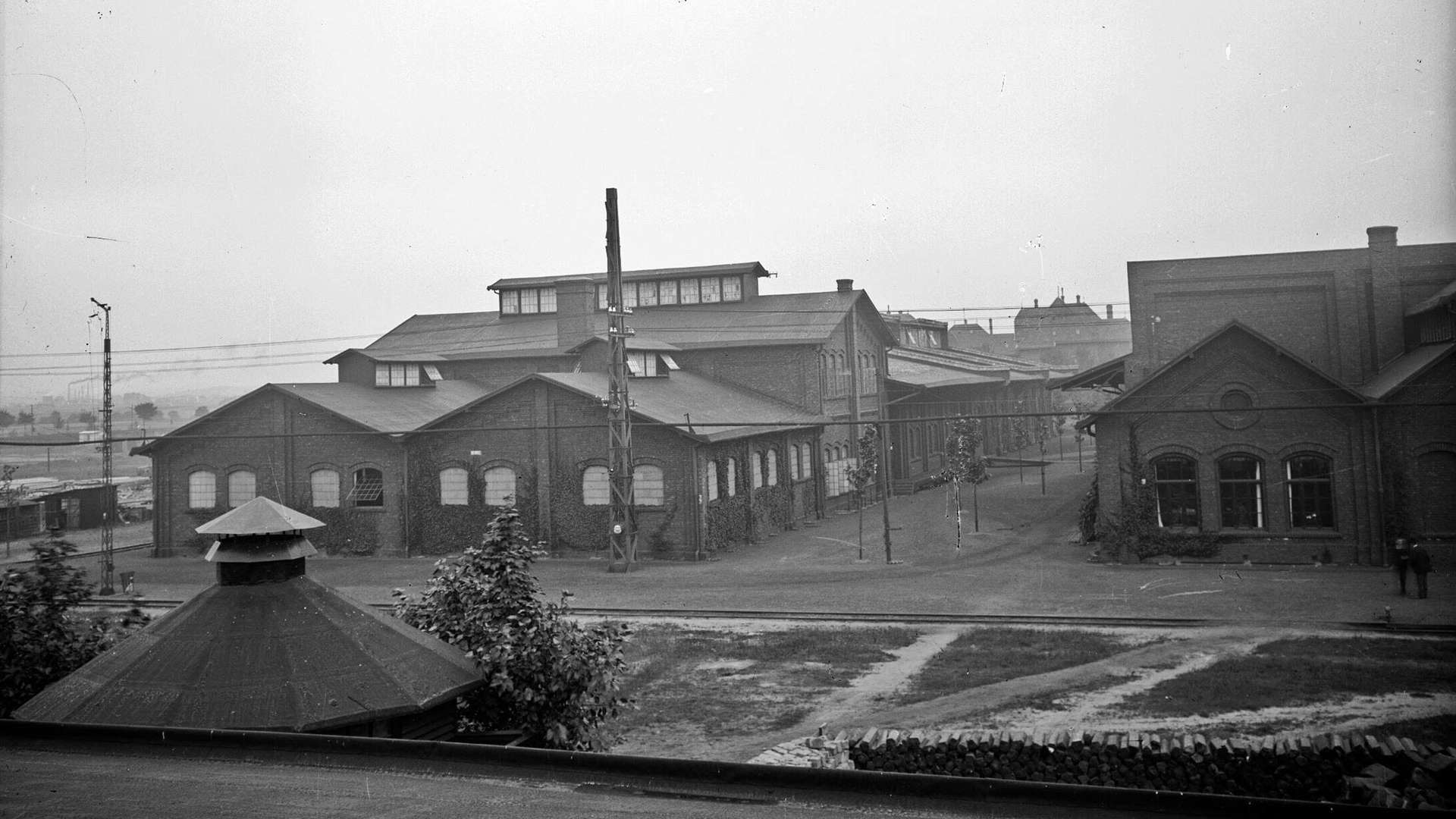
The medical product warehouse around 1905.Left is the gymnasium next to the washroom. the entrance to the gymnasium is on the left-hand side.

The women's gymnastics squad circa 1908 in front of entrance to gymnasium.
The 'gymnastics room' was set up next to female workers recreation rooms as the warehouse and the whole pharmaceuticals section mostly employed female workers.
It is possible this 'gymnastics room' was included in the plans when the building was constructed in 1903 to give the female workers, who spent ten hours in a sedentary position, the opportunity of having a place to move around in (the first photos are exclusively of women).
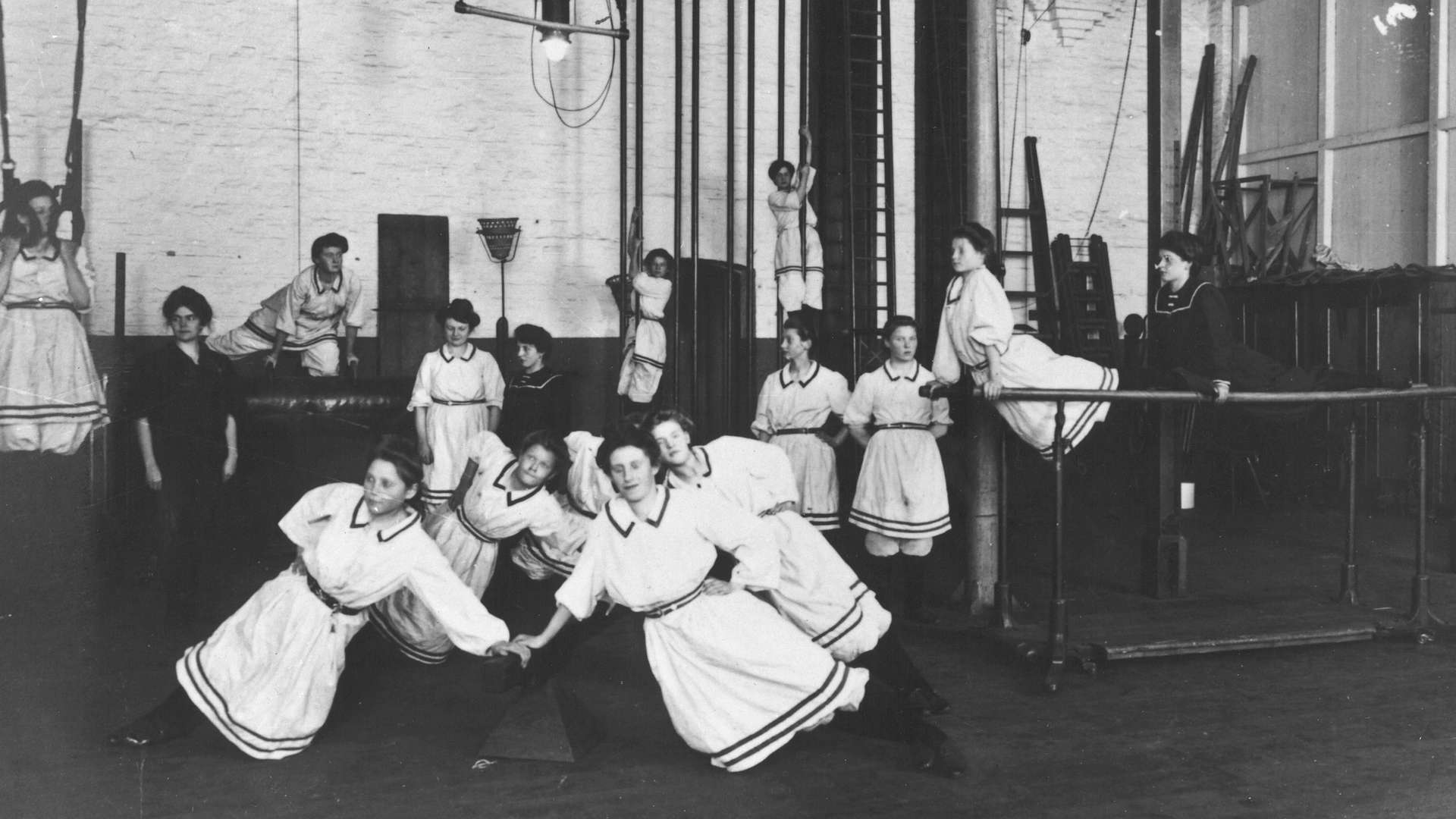
The interior of the gymnasium circa 1905. Bayer female employees doing gymnastics.
Gymnastics were very drill-like and militaristic and they proved to be unappealing to most young men. That resulted in the gymnasts Ferdinand Stader, Gustav and Willi Lerch, Ernst and Lorenz Meurer getting the ball rolling in Leverkusen for the first time.
On Friday 31 Mai 1907, five men with eleven like-minded associates, with the agreement of the gymnasts, called for the establishment of the football squad of TuS 04 on 1 June 1907. A precondition set by the gymnasts for approval to play football was the regular attendance of the footballers at the weekly gymnastics evenings. The birthplace of our club was the Wiesdorfer Hof as the restaurant owned by Fritz Lützenkirchen was called. The building existed until the end of the Second World War on the corner of Titanstraße and Friedrich-Ebert-Straße. The adjoining room, the Germaniasaal, served as the exercise point for all departments from after the Second World War under building number A9 until its demolition.
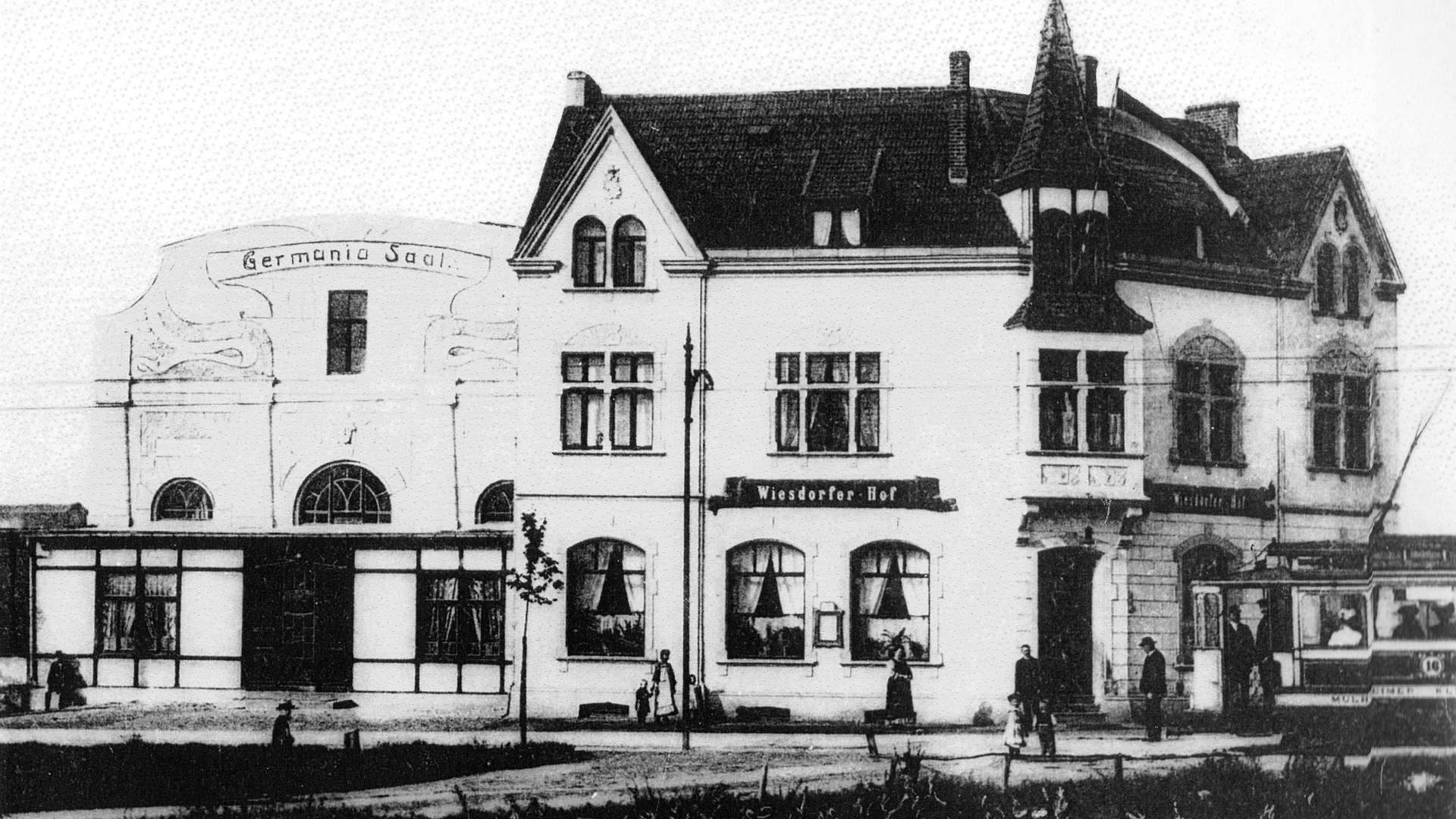
Wiesdorfer Hof circa 1907.
The works club football squad played their first games on a ball sportsground either behind Wiesdorfer Hof on a vacant area of land in today's F block, site to this day of the titanium dioxide factory of the company 'Kronos Titan' or opposite Wiesdorfer Hof on the other side of Provincial Street on the site of a former brick works and home to the works vehicle section since 1958. Matches were also played on a vacant area of grass south of the officials housing on Böttingerstraße or in Wiesdorf at the other end of the 'welfare park' (now recreation house park) behind the domestic science school with access from Carl-Leverkus-Straße. all the games were friendlies. Even the beautiful lawns in today's Carl Duisberg Park (up to Duisberg's death it was called Kaiser-Wilhelm-Park) were used to play football but that did not meet with approval from the said Herr Duisberg and the games were soon banned. That probably took place around the time of the First World War in the area where the Carl Duisberg swimming baths were built in 1933.
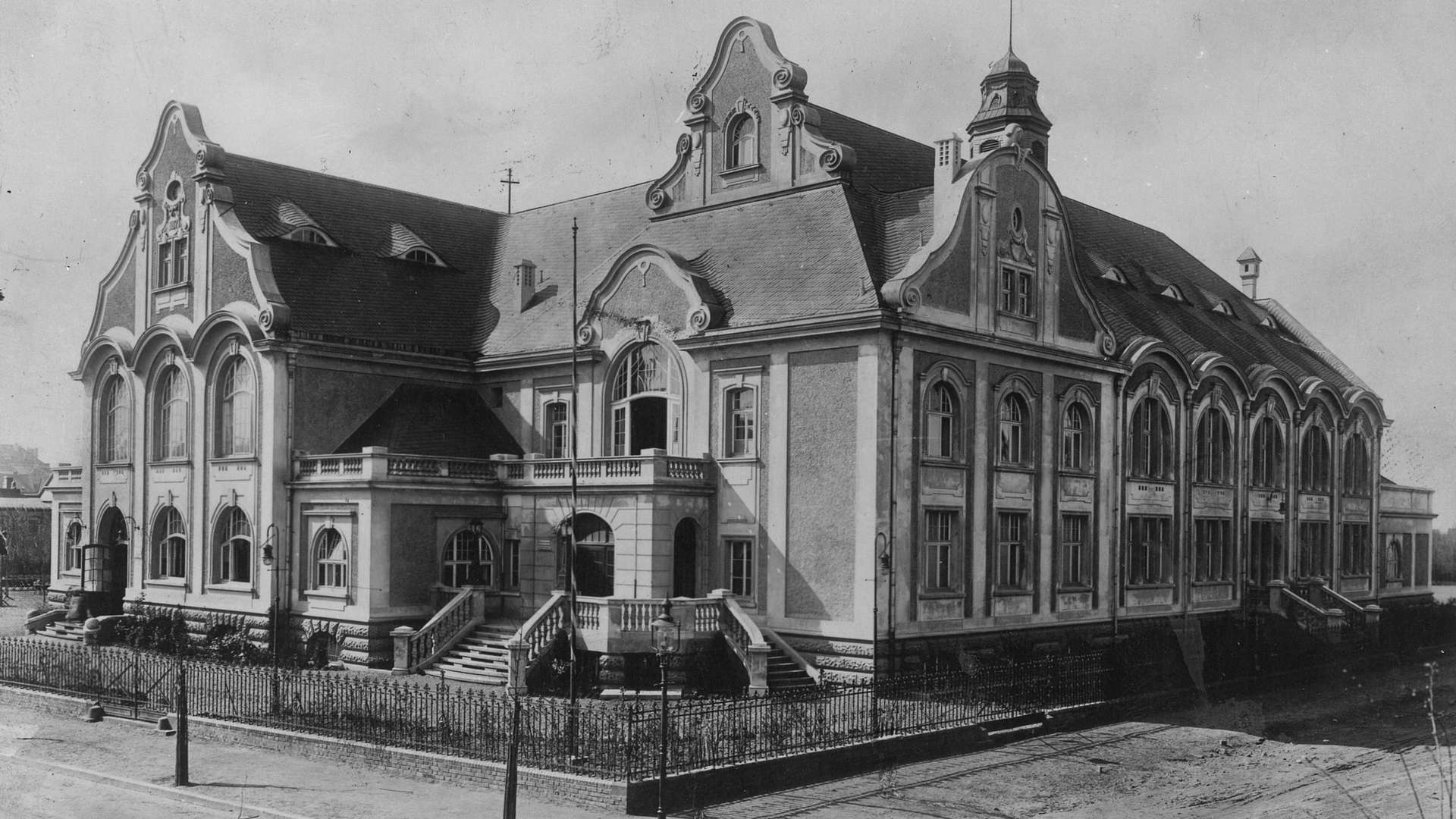
The recreation house circa 1908.
The building of the recreation house finally opened up new and comfortable options for the club to do gymnastics as the event room in the big, multi-functional building on Nobelstraße that houses a restaurant, bowling alley, billiard room and reading room, was also available to the gymnasts (including the stage). When it was officially opened on 13 September 1908, Dr. Carl Duisberg, general director of the paint factories donated a flag to the club that is still in existence.
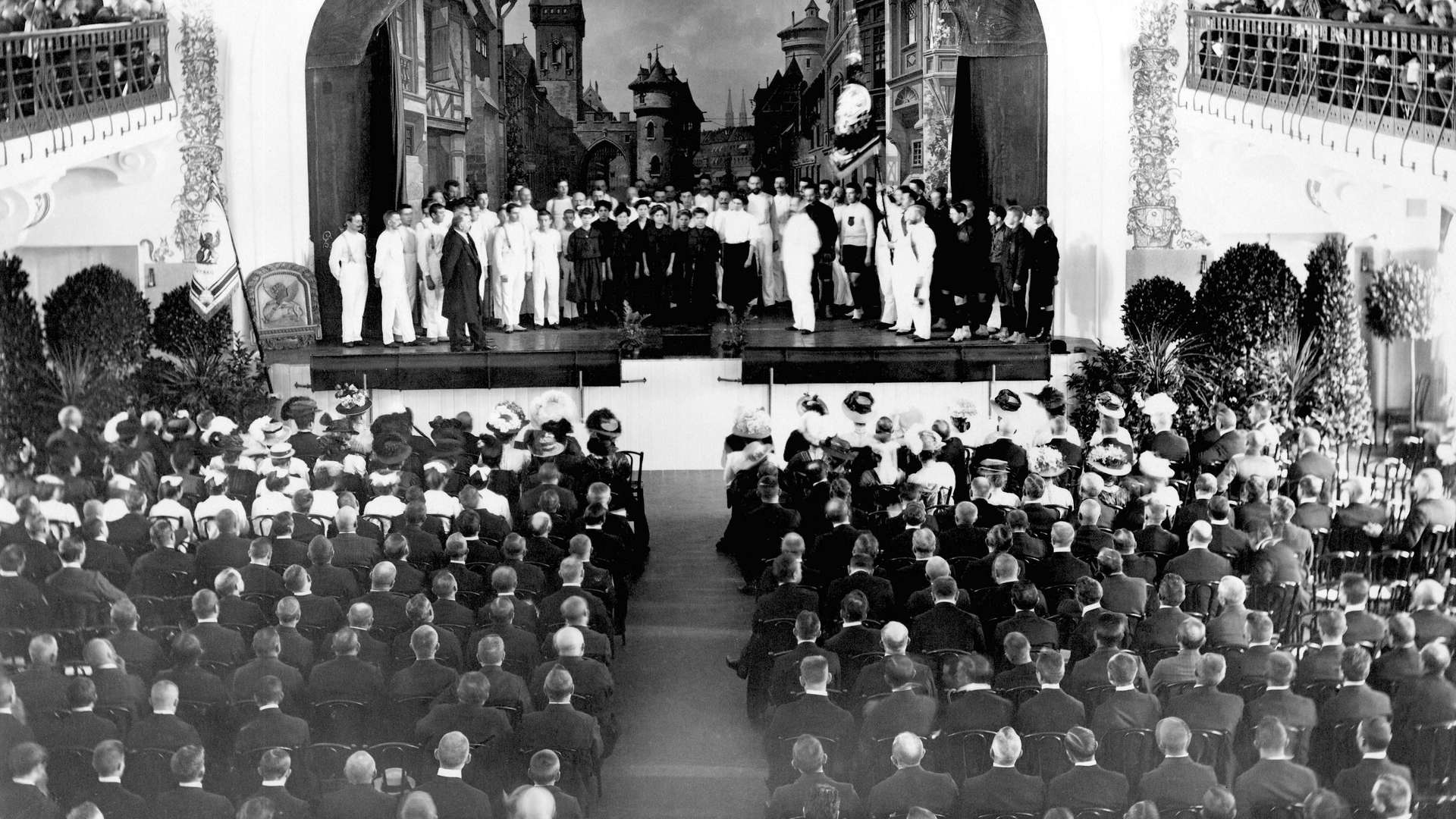
The consecration of the flag on 13 September 1908 in the main room of the recreation house. The flag still existing today is on the left.
The first kit, the responsibility of the footballers themselves, consisted of a black shirt with red collar and cuffs. At the request of the football squad, the management approved the use of the Bayer lion as a club badge that was sewn onto the shirts.
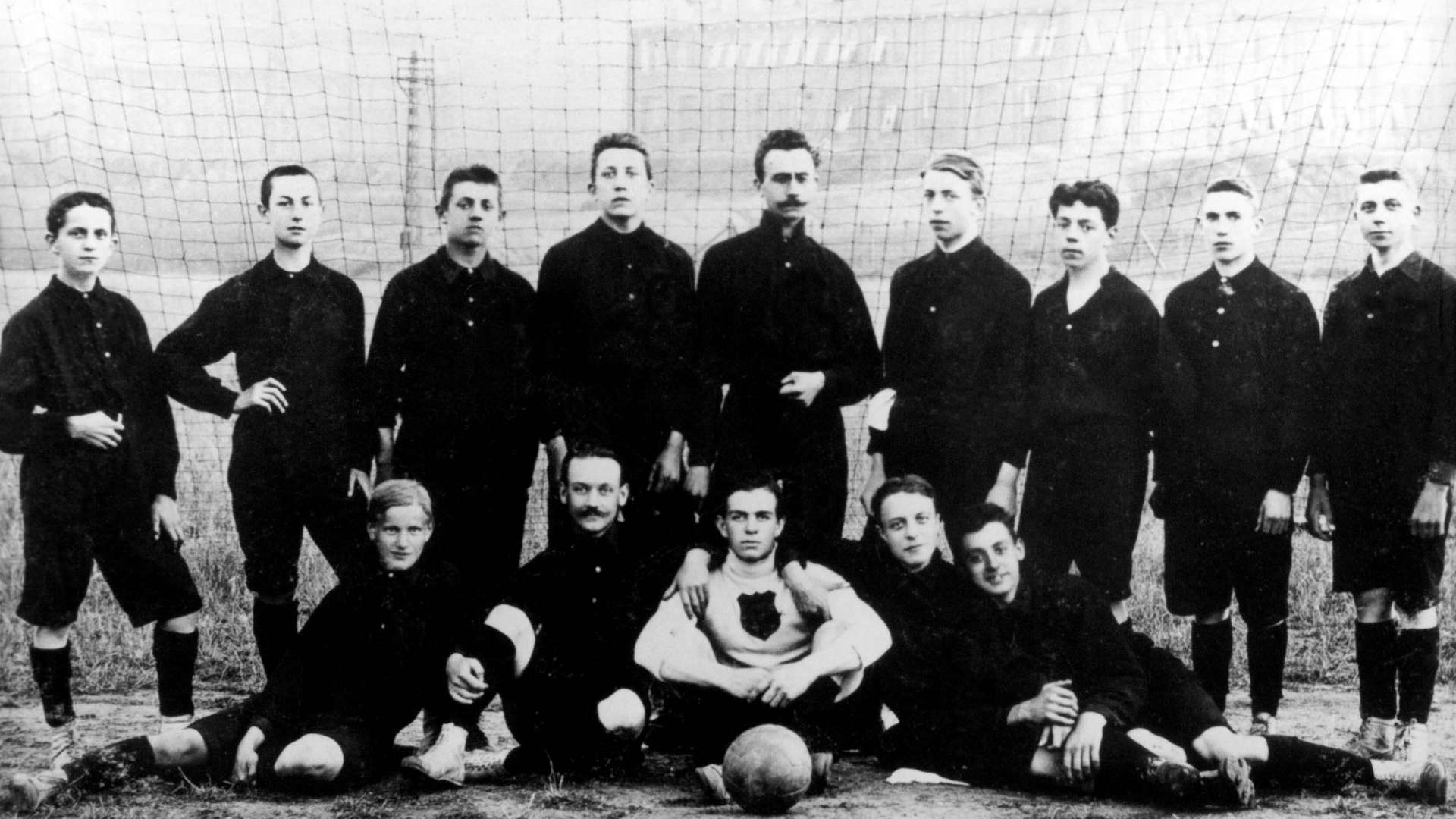
The first team photo of Bayer team on the vacant piece of work's land in today's F block behind Wiesdorfer Hof.
Standing l. to r. : Heinrich Alt, Hans Fischer, Paul Meiswinkel, Heinrich Rissinger, Gustav Lerch, Paul Linke, Kurt Barthel, Max Sandbach, Ernst Geiger
Seated l. to r.: Karl Teske, Lambert Huck, Walter Geist, Ludwig John, Willi Lerch
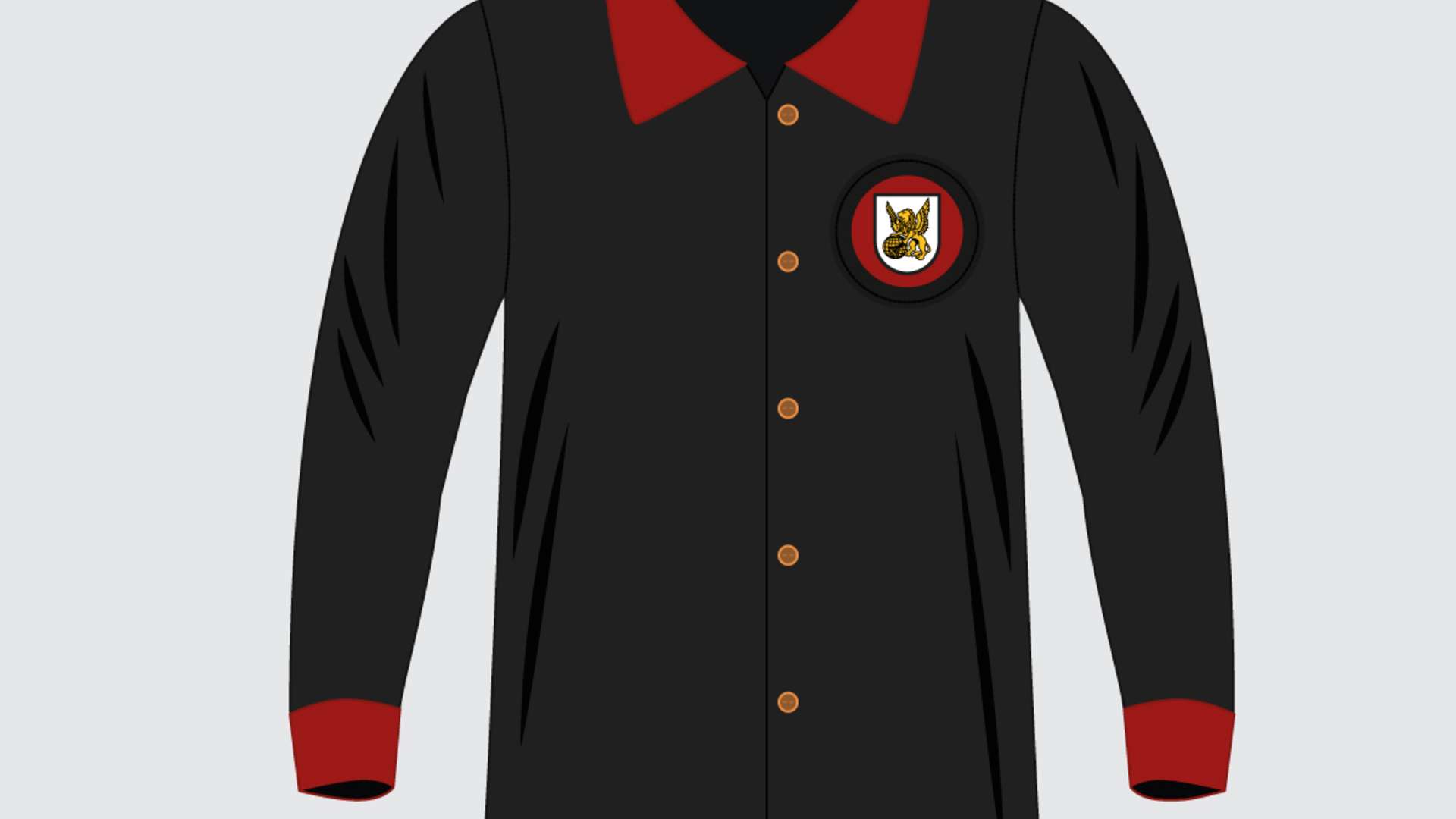
The TuS 04 football squad played in these shirts in 1908.
Up to the First World War, our football team had a nomadic existence moving between different venues until finding a home in 1914: the Ground on the Dhünn also known as Dhünn Ground. The pitch was somewhat away from Colony II, extended to the west between 1910 and 1914, with its back to the Dhünn. The area for the pitch in the water meadows of the Dhünn could only be created after the river to the mouth of the Wupper was canalised in 1910. With the construction of the court like building complex north of today's northern ring (today Albert Einstein Straße) as the final extension to the colony. In 1919, Wiesdorf moved closer to the sports ground that was home to many different sporting events for 18 years, above all for football and outdoors handball. In spite of the new home there was often a need to move to other Wiesdorf sports venues as there was one big drawback with the pitch on the Dhünn: flooding! Due to the deficient flood protection on the Rhine there were often floods with postponements and ground changes unfortunately being on the agenda.

The pitch on the Dhünn in 1920. Bürrig is identifiable in the background.
During the First World War it was difficult to keep sport going in Leverkusen-Wiesdorf. Many members of TuS 04 went to war. Sporting life in our city only returned to normal in the 1920s.
Sources:
- Walter Scharf – '50 Jahre Bayer 04 – Die Geschichte eines Sportvereins'
- '50 Jahre Turn- und Spielverein 1904 EV der Farbenfabriken Bayer Leverkusen'
- Matthias Bauschen – '100 Jahre Bayer 04 – Die Geschichte eines einzigartigen Sportvereins'
- Werner Röhrig – Gesammelte Zeitungsausschnitte aus 100 Jahren Bayer 04 Leverkusen (Bayer 04 achive)
- Leverkusen municipal archive
